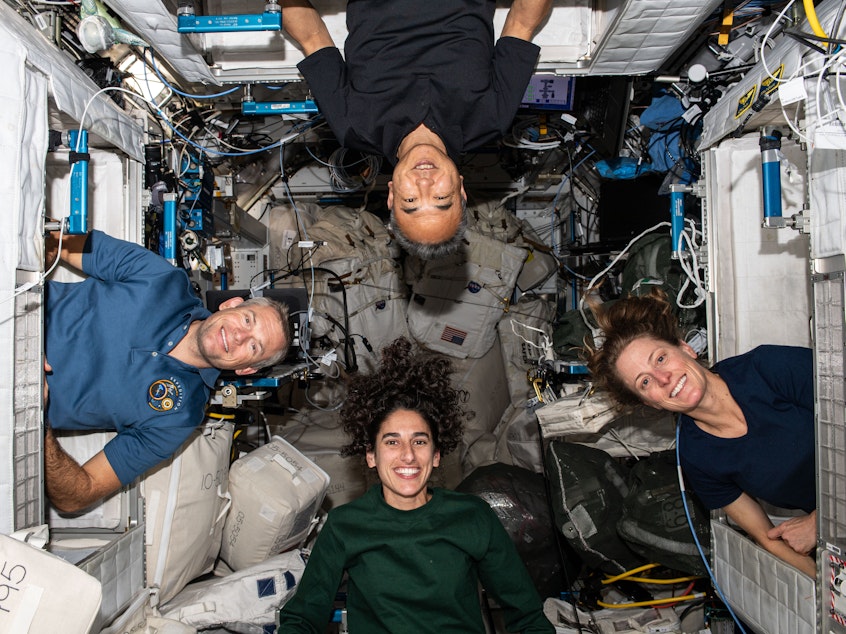After 6 months in space and a fiery return over the U.S., NASA's Crew-7 is back home

Four people of NASA's Crew-7 mission streaked across the Midwest and Southern U.S. in the pre-dawn hours Tuesday with a successful and fiery return to Earth.
The SpaceX Crew Dragon capsule could be seen by people who looked up and watched it zip across the darkened sky.
Over the course of an hour, the capsule went from 17,500 mph in orbit and plunged through the atmosphere to bleed off speed. It came to a gentle splashdown in the Gulf of Mexico under a canopy of parachutes off Pensacola, Fla. capping six months aboard the International Space Station.
The crew was made up of mission commander and NASA astronaut Jasmin Moghbeli, the European Space Agency's Andreas Mogensen, Japan Aerospace Exploration Agency's Satoshi Furukawa and Russian cosmonaut Konstantin Borisov.
It was the first trip to space for Moghbeli and Borisov. Furukawa and Mogensen completed their second spaceflights.
The crew on the science and research mission conducted more than 200 experiments. According to NASA, these included studying blood samples that, for the first time, allowed researchers to monitor the impact of spaceflight on immune function during the flight. Previously, this could only be studied before and after a mission.
The crew also spent time testing special membranes designed to eliminate contaminants from wastewater. As NASA and others plan to send humans deeper into space, having a way to filter and reuse water is critical to the success of long-range missions.
They were relieved by members of the Crew-8 mission which launched on a SpaceX rocket to the I.S.S. last week. The Crew-8 team will spend the next half-year aboard the orbital outpost. The rotation is part of NASA's Commercial Crew program. After the shuttle fleet retired in 2011, the agency pays commercial companies to fly people to and from the space station.
The next NASA mission to the I.S.S. is scheduled to be the first human flight of Boeing's long-delayed Starliner capsule. It's scheduled for a two-week test mission with a pair of astronauts aboard in May. [Copyright 2024 NPR]
